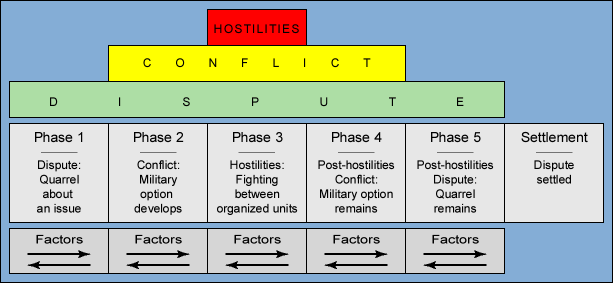
CASCON is based on the Bloomfield-Leiss conflict model, which represents conflict as a dynamic process in the sense of passing through some or all of a sequence of distinctive and identifiable stages or phases. Phase transitions are marked by a change in the level of intensity of the conflict. The lowest level is a dispute where the parties have a difference over one or more issues, but the use of force is not threatened or under consideration. The next higher level is a conflict, where one or both sides is actively considering the use of organized military force to achieve its objectives. The highest level is hostilities involving combat among organized military forces.
Within each phase there are a variety of influential events and conditions called factors, such as personalities, relationships, actions, events, perceptions, and other conditions. Some of these factors can generate pressures moving the situation toward "worsening," that is, increased violence or its threat; or, conversely, pressures to move the situation in a more benign direction, that is, away from violence. In other words, "factors" combine so as to worsen or improve the conflict and, thus, move the conflict towards or away from "thresholds" between phases in the direction of greater or less violence. The factors in the model are all from the specific facts that have been identified as influential in particular historical conflicts. These case-specific factors were then grouped and restated in generalized terms to permit comparison across cases.
